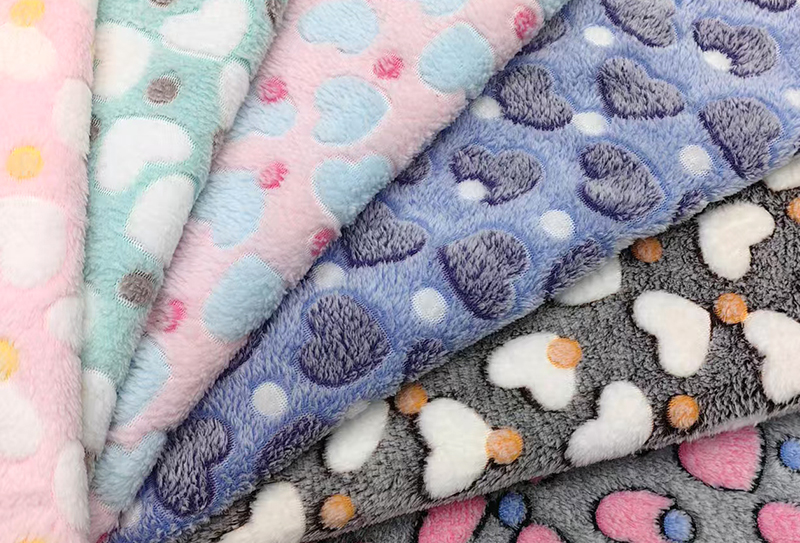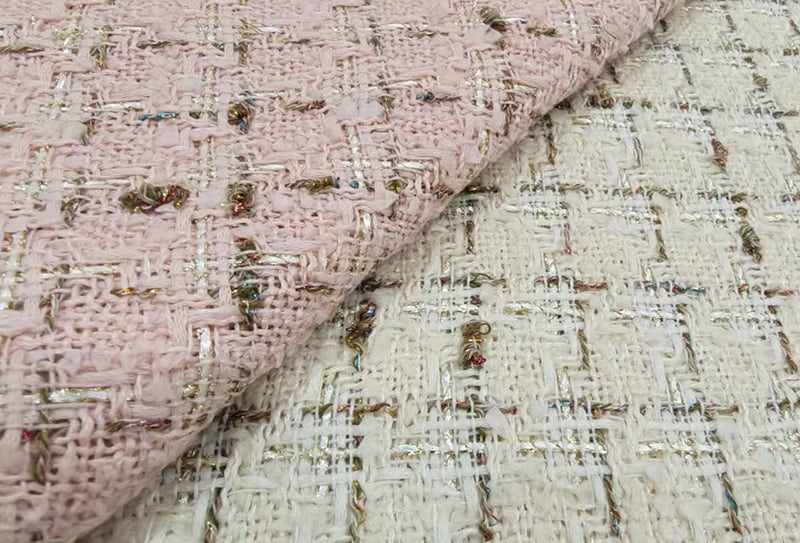The 500g/148cm tweed fabric/Chanel-inspired fabric (Item No. LS834322) is precision-woven from high-count blended yarns. Its medium-heavy weight of 500g/m imparts excellent stiffness and warmth. Its 1...
See DetailsFlannel Fabric vs. Cotton and Wool: Key Differences and Advantages
Understanding the Core Characteristics of Flannel
Flannel fabric represents one of the most beloved textile materials globally, particularly celebrated for its exceptional softness and insulating properties. Unlike many other fabrics that maintain a singular identity, flannel can be crafted from various base materials including cotton, wool, or synthetic fibers, though cotton flannel remains the most prevalent in contemporary applications. The defining characteristic of flannel lies in its unique manufacturing process where the yarn is gently brushed during production, creating a distinctive napped surface on one or both sides. This brushing technique raises fine fibers from the underlying cloth, resulting in that signature fuzzy texture that feels incredibly soft against the skin while simultaneously creating numerous tiny air pockets that trap body heat effectively.
The Manufacturing Process of Flannel
The creation of flannel fabric involves several meticulous steps that distinguish it from other textiles. Initially, the base fibers (typically cotton) are spun into yarn through conventional spinning methods. What sets flannel production apart occurs after the weaving process, where specialized machines featuring fine metal brushes gently raise the fibers from the woven cloth. This brushing process, known as napping, can be applied to one side (single-napped) or both sides (double-napped) of the fabric, with double-napped flannel offering superior softness and insulation. The degree of napping can be adjusted during manufacturing to produce flannels of varying thickness and plushness, allowing for different end-use applications ranging from lightweight shirts to heavy bedding materials.
Historical Context and Modern Applications
Flannel boasts a rich historical legacy dating back to 17th century Wales, where it was originally woven from carded wool. The fabric gained prominence as practical workwear for farmers and laborers who valued its durability and weather-resistant qualities. Throughout subsequent centuries, flannel evolved significantly, with cotton gradually supplanting wool as the primary fiber source due to cotton's greater softness and easier care requirements. In contemporary times, flannel has transcended its utilitarian origins to become a staple in diverse applications including:
- Comfortable shirts and pajamas prized for their softness
- Cozy bedding sheets and blankets that provide warmth without excessive weight
- Protective infant clothing that's gentle on delicate skin
- Durable lining materials for jackets and outerwear
- Home decor items like curtains and upholstery that add textural interest
This versatility across multiple domains demonstrates flannel's enduring appeal and functional superiority in specific applications where comfort, warmth, and softness are prioritized.
Flannel Versus Cotton: A Comprehensive Comparison
When evaluating flannel against standard cotton fabrics, several distinct differences emerge that significantly impact their performance, comfort, and ideal usage scenarios. While flannel is often made from cotton fibers, the additional manufacturing processes transform its characteristics substantially, creating a fabric that behaves quite differently from its unbrushed counterpart. Understanding these distinctions enables consumers to make informed decisions based on their specific needs, whether seeking optimal warmth, breathability, or particular tactile qualities.
Texture and Comfort Differences
The most immediately noticeable distinction between flannel and standard cotton lies in their textural qualities. Regular cotton fabric, while naturally soft, maintains a smooth surface that directly contacts the skin. Flannel, through its napping process, develops a raised, fuzzy surface that feels noticeably softer and more cushioning against the body. This textured surface doesn't merely provide psychological comfort; it physically reduces friction between the fabric and skin, making it particularly beneficial for individuals with sensitive skin or those who experience irritation from smoother textiles. Additionally, the raised fibers create microscopic air pockets that enhance the fabric's thermal retention capabilities while maintaining a surprisingly breathable structure that prevents the clamminess sometimes associated with synthetic fleece materials.
Thermal Performance and Seasonal Versatility
In terms of thermal regulation, flannel and standard cotton serve distinctly different purposes. Regular cotton excels in warm weather conditions due to its breathability and moisture-wicking properties, which efficiently pull perspiration away from the body to facilitate cooling evaporation. Flannel, by contrast, provides superior insulation in cooler environments by trapping body heat within its napped fibers while still maintaining adequate breathability to prevent overheating. This makes flannel the preferred choice for fall and winter garments, sleepwear, and bedding, while standard cotton remains ideal for spring and summer applications. The thermal efficiency of flannel means that less fabric weight is required to achieve equivalent warmth compared to unbrushed cotton, resulting in comfortable, lightweight garments that provide disproportionate insulation relative to their thickness.
Direct Comparison Table: Flannel vs. Standard Cotton
| Characteristic | Flannel | Standard Cotton |
|---|---|---|
| Surface Texture | Brushed, napped, fuzzy | Smooth, untextured |
| Thermal Insulation | High - excellent for cold weather | Low - better for warm weather |
| Breathability | Moderate - warm but not stifling | High - allows maximum air circulation |
| Weight & Drape | Heavier with more structured drape | Lighter with fluid drape |
| Moisture Management | Absorbs moisture but dries slower | Wicks moisture and dries quickly |
| Skin Feel | Exceptionally soft with cushioning effect | Smooth and soft but less plush |
| Primary Applications | Cold-weather clothing, pajamas, bedding | Warm-weather clothing, sheets, towels |
Flannel Versus Wool: Analyzing Insulation and Comfort
The comparison between flannel and wool presents a more complex analysis, as both fabrics excel in thermal insulation but achieve warmth through different mechanisms and offer distinctly different wearing experiences. Wool, as a natural fiber sourced from animal coats, possesses inherent structural qualities that make it exceptionally warm and moisture-resistant. Flannel, typically cotton-based but sometimes wool-blend, provides warmth through its napped texture rather than the intrinsic properties of the fiber itself. This fundamental distinction results in significant differences in weight, maintenance requirements, comfort against skin, and overall performance in various environmental conditions.
Warmth Mechanisms and Moisture Handling
Wool derives its insulating properties from the natural crimp of the fibers and the presence of lanolin, which create numerous tiny air pockets that trap body heat effectively. Additionally, wool possesses the remarkable ability to absorb up to 30% of its weight in moisture without feeling damp, making it excellent for variable temperature conditions and physical activity. Flannel generates warmth primarily through its brushed surface, which creates a layer of still air next to the skin that serves as thermal insulation. While flannel absorbs moisture competently, it lacks wool's moisture-wicking capabilities and takes considerably longer to dry once saturated. This makes wool superior for high-exertion activities in cold conditions, while flannel excels in stationary warmth applications like lounge wear, sleepwear, and bedding where maximum comfort is prioritized over technical performance.
Comfort, Weight, and Wearability Considerations
In terms of direct wearability, flannel generally surpasses wool in softness and non-irritating qualities, particularly for those with sensitive skin or wool allergies. The brushed cotton surface of flannel feels consistently soft and pliable against the skin, while wool can sometimes cause itching or irritation unless specifically processed (such as merino wool). Flannel typically offers better drape and less bulk than equivalent warmth wool garments, resulting in less restrictive clothing that maintains comfort during extended wear. However, wool demonstrates superior durability and natural odor resistance, requiring less frequent washing than flannel items. For individuals wondering about is flannel fabric good for sensitive skin, the answer is overwhelmingly positive, as the napping process creates a cushioning effect that minimizes friction and irritation.
Direct Comparison Table: Flannel vs. Wool
| Characteristic | Flannel | Wool |
|---|---|---|
| Primary Insulation Method | Trapped air in napped fibers | Natural fiber crimp and lanolin |
| Moisture Management | Absorbent but slow-drying | Highly wicking and quick-drying |
| Weight to Warmth Ratio | Good warmth for moderate weight | Excellent warmth for light weight |
| Skin Comfort | Exceptionally soft, rarely irritating | Can be itchy, varies by wool type |
| Durability & Longevity | Good, but may pill over time | Excellent, very resilient fiber |
| Care & Maintenance | Generally machine washable | Often requires special cleaning |
| Allergenic Potential | Low, hypoallergenic | Higher, can trigger allergies |
Key Advantages of Choosing Flannel Fabric
Flannel possesses several distinctive advantages that explain its enduring popularity across centuries and cultures. These benefits span practical functional qualities to sensory comfort attributes, creating a compelling case for selecting flannel in specific applications where its characteristics excel. From temperature regulation to tactile pleasure, flannel offers a unique combination of properties that neither standard cotton nor wool can replicate in quite the same way.
Superior Comfort and Sensory Benefits
The exceptional softness of flannel represents its most celebrated advantage, providing a comforting, cozy feel that is difficult to match with other fabrics. This luxurious softness isn't merely a superficial quality; it translates to genuine physical comfort, particularly during extended wear or while sleeping. The napped surface creates a micro-cushioning effect that reduces pressure points and minimizes skin irritation, making it an excellent choice for sleepwear, infant clothing, and garments for those with dermatological sensitivities. Additionally, the psychological comfort derived from flannel's warmth and softness shouldn't be underestimated—the fabric evokes feelings of security and relaxation that contribute to its popularity in loungewear and bedding applications.
Functional Performance in Various Conditions
Beyond comfort, flannel delivers practical performance advantages that make it uniquely suited to specific scenarios. Its excellent thermal efficiency provides substantial warmth without excessive weight or bulk, allowing for freedom of movement while maintaining comfort in cool environments. Unlike many synthetic fleece materials that can overheat and feel clammy, flannel maintains better breathability while still offering impressive insulation. The fabric's substantial hand and structured drape often result in garments that maintain their shape better than standard cotton equivalents, providing a more polished appearance while retaining comfort. For those concerned about how to care for flannel fabric to prevent pilling, proper maintenance including gentle washing and avoiding high heat drying can preserve its optimal condition for extended periods.
Practical Applications and Ideal Uses for Flannel
Understanding the ideal applications for flannel fabric ensures that consumers can maximize its benefits while avoiding scenarios where alternative fabrics might perform better. Flannel's unique combination of properties makes it exceptionally well-suited for specific uses where comfort, warmth, and softness are prioritized over moisture-wicking, lightweight packability, or formal appearance. By matching the fabric to appropriate applications, users can enjoy flannel's distinctive advantages while minimizing any limitations.
Apparel Applications: Where Flannel Excels
In the realm of clothing, flannel finds its most prominent expression in several key categories where its attributes deliver superior performance and comfort. The classic flannel shirt represents perhaps the most recognizable application, offering ideal casual wear for cool weather with its balance of warmth, breathability, and comfort. Flannel pajamas and sleepwear capitalize on the fabric's softness and thermal properties to enhance sleep comfort in cooler bedrooms. For infant and children's clothing, flannel provides gentle warmth without the potential irritation of wool, making it perfect for sensitive skin. Additionally, flannel serves as an excellent lining material in jackets and coats, adding warmth without bulk while providing a comfortable interface against the skin. When considering best flannel fabric for pajamas, double-napped cotton flannel typically offers the optimal balance of softness, durability, and warmth for overnight wear.
Home Textiles and Beyond: Expanding Flannel's Utility
Beyond apparel, flannel delivers exceptional performance in various home textile applications where its characteristics provide tangible benefits. Flannel sheets have gained tremendous popularity for cold-climate bedding, offering warmth superior to standard cotton sheets while maintaining better breathability than synthetic alternatives. The fabric's softness and insulating properties make it ideal for blankets and throws, particularly for casual lounging. In more specialized applications, flannel's slight surface texture and warmth make it suitable for certain craft and sewing projects, including:
- Quilt backing that provides extra warmth
- Soft toys and baby items that require gentle materials
- Interfacing and interlining for home decor projects
- Protective cloths for delicate surfaces
- Reusable cleaning cloths that are highly absorbent
This diversity of applications demonstrates flannel's versatility beyond traditional clothing uses, particularly in scenarios where its combination of softness, warmth, and absorbency delivers functional advantages.
Caring for Flannel to Maintain Its Qualities
Proper maintenance is crucial for preserving flannel's distinctive characteristics throughout its lifespan. Unlike some fabrics that maintain their properties regardless of care techniques, flannel's napped surface and soft hand can diminish with improper cleaning and storage. Understanding the specific requirements for flannel care ensures that items retain their comfort, appearance, and functional performance through numerous uses and cleaning cycles.
Washing and Drying Best Practices
Flannel responds best to gentle cleaning methods that protect its brushed surface from excessive abrasion. Machine washing with cold or warm water using a mild detergent helps maintain fiber integrity and prevent unnecessary wear. Avoiding overcrowding in the washing machine is particularly important for flannel, as tight packing can create excessive friction that leads to premature pilling. When drying flannel, medium heat or air drying produces the best results, as high heat can damage the fibers and diminish softness. Some shrinkage may occur during initial laundering, particularly with cotton flannel, though this is typically minimal when following proper care instructions. For those wondering about flannel fabric shrinkage prevention methods, washing in cold water and avoiding high-heat drying can significantly minimize dimensional changes.
Long-Term Maintenance and Storage Considerations
Beyond routine cleaning, several practices can extend flannel's lifespan and maintain its optimal condition. Proper storage in well-ventilated areas prevents mustiness and maintains freshness between uses. Addressing pills that may develop over time with a fabric comb or gentle electric fabric shaver helps restore flannel's smooth appearance without damaging the underlying fabric. When ironing flannel is necessary, using a medium heat setting with steam effectively smooths wrinkles while preserving the nap's integrity. For seasonal storage, ensuring items are completely clean before packing prevents setting of stains and avoids attracting pests. Understanding difference between brushed and regular cotton becomes particularly relevant during care, as the raised fibers of brushed flannel require more gentle handling than standard cotton weaves to maintain their distinctive texture and performance characteristics over time.
Making the Right Fabric Choice for Your Needs
Selecting between flannel, cotton, and wool ultimately depends on specific needs, environmental conditions, and personal preferences regarding comfort, maintenance, and performance. Each fabric possesses distinct advantages that make it ideally suited to particular applications, with some overlap in certain usage scenarios. By understanding the fundamental characteristics and comparative performance of each textile, consumers can make informed decisions that maximize satisfaction and functionality.
Scenario-Based Fabric Selection Guidelines
Certain situations naturally favor one fabric over others based on their inherent properties and performance characteristics. For sleepwear in cool climates, flannel typically outperforms both standard cotton and wool due to its optimal balance of softness, warmth, and breathability. In active outdoor scenarios involving moisture and variable temperatures, wool's superior moisture management and insulating properties when damp make it the preferred choice. For warm weather garments and bedding, standard cotton's lightweight breathability provides the most comfort. When evaluating flannel vs cotton for winter, flannel generally offers superior insulation and warmth retention, making it better suited for cold weather applications despite sharing the same cotton fiber base. By matching the fabric properties to specific needs and conditions, users can ensure optimal performance and satisfaction from their textile choices.
Environmental and Practical Considerations
Beyond immediate performance characteristics, several additional factors may influence fabric selection decisions. Environmental considerations increasingly impact textile choices, with cotton flannel offering the advantage of biodegradability compared to synthetic alternatives, though concerns about conventional cotton farming practices may lead some consumers toward organic options. Practical maintenance requirements also play a significant role in fabric suitability, with flannel typically offering easier care than wool while providing substantially more warmth than standard cotton. Cost considerations vary considerably based on fabric quality, with premium wool typically commanding the highest prices, followed by quality flannel, then standard cotton. By weighing these practical considerations alongside performance characteristics, consumers can select the most appropriate fabric for their specific circumstances, budget, and values.
-

This 450g/148cm tweed fabric (item number LS540412) utilizes a high-density weave. Its 450g/m² weight imparts just the right amount of stiffness and flexibility, while its 148cm width is optimized for...
See Details -
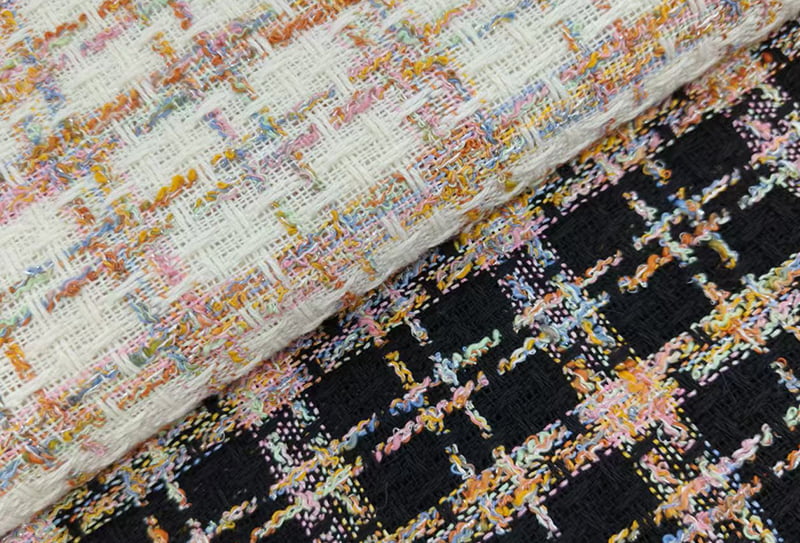
This 500g/148cm tweed fabric/Chanel-inspired fabric (item LS2517) utilizes a multicolored, ethnic-inspired weaving technique, innovatively blending traditional patterns with modern Chanel-inspired ele...
See Details -
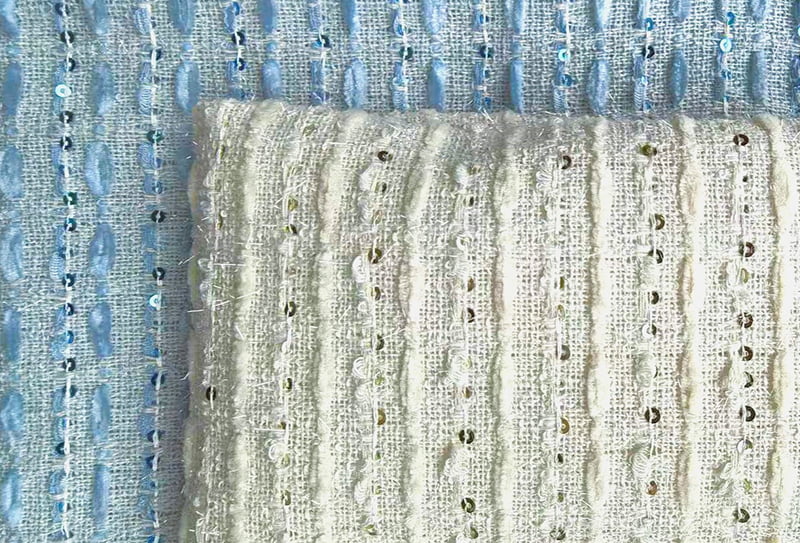
The 425g/148cm wrinkle-resistant and wear-resistant tweed fabric/Chanel-style woven fabric (item number 897331) adopts a composite weaving process of high-count blended yarn and precision sequins. The...
See Details -
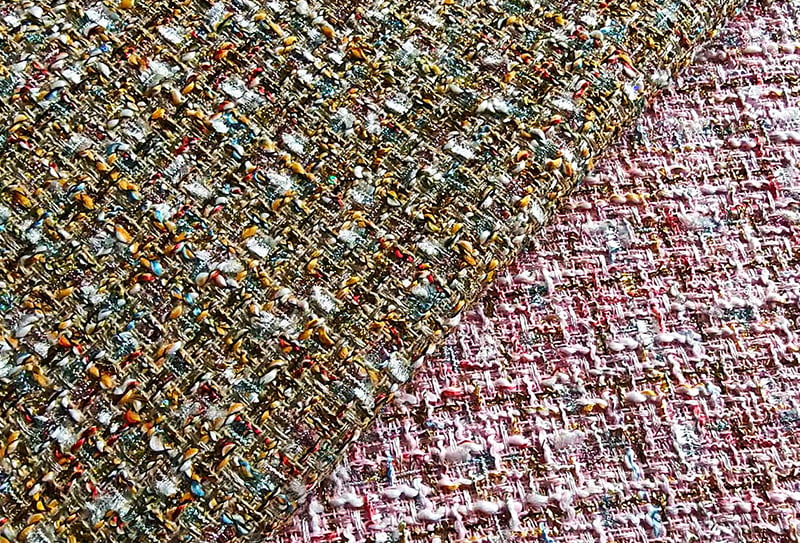
This 450g/148cm tweed fabric (item 1722) features a woven composite of gold and silver threads and sequins. Its thickened 450g/m weight imparts exceptional stiffness, while its 148cm width is optimize...
See Details -
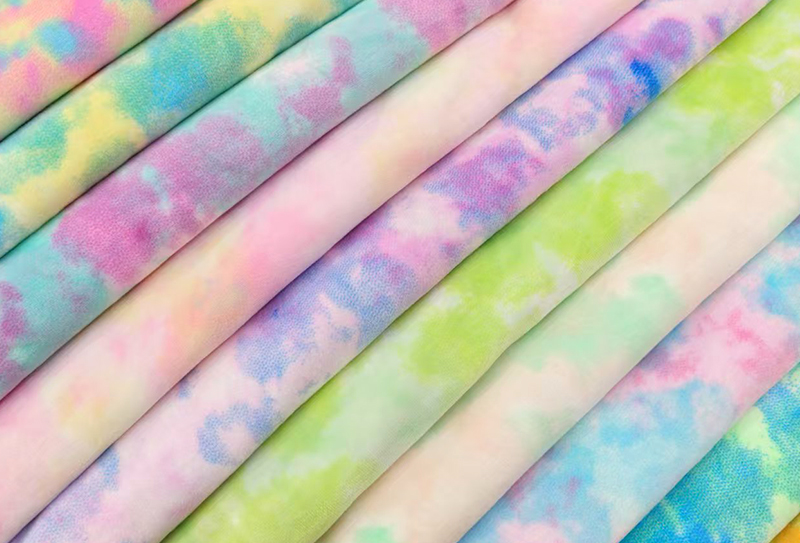
510g/170cm spandex ultra-soft short plush fabric adopts 95% polyester + 5% spandex blending process. The 300g/m weight and elastic fiber give the fabric excellent close-fitting comfort. The 170cm ultr...
See Details

 English
English 中文简体
中文简体